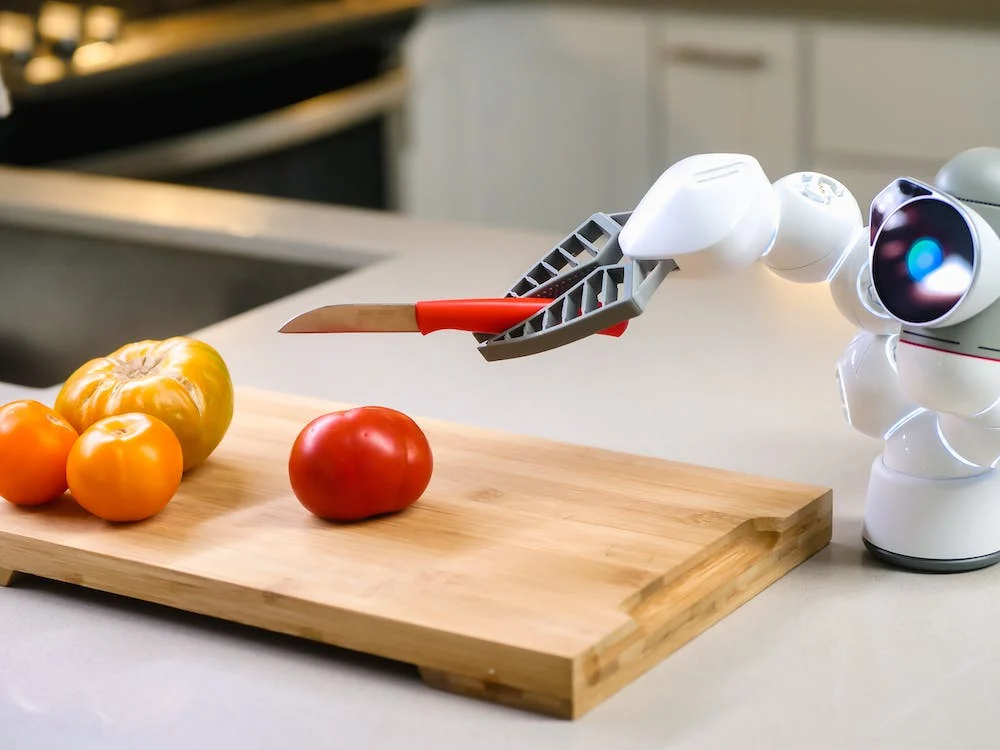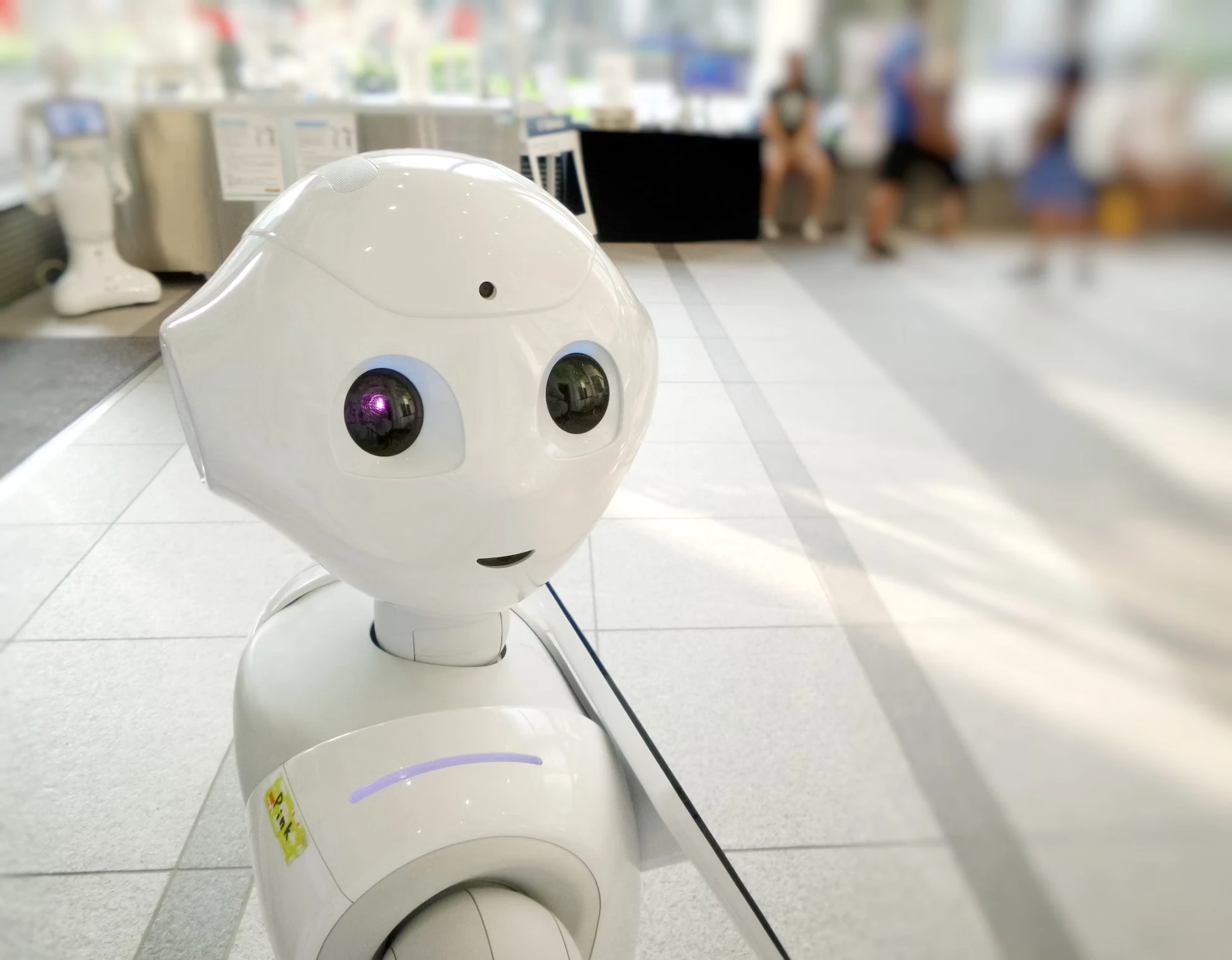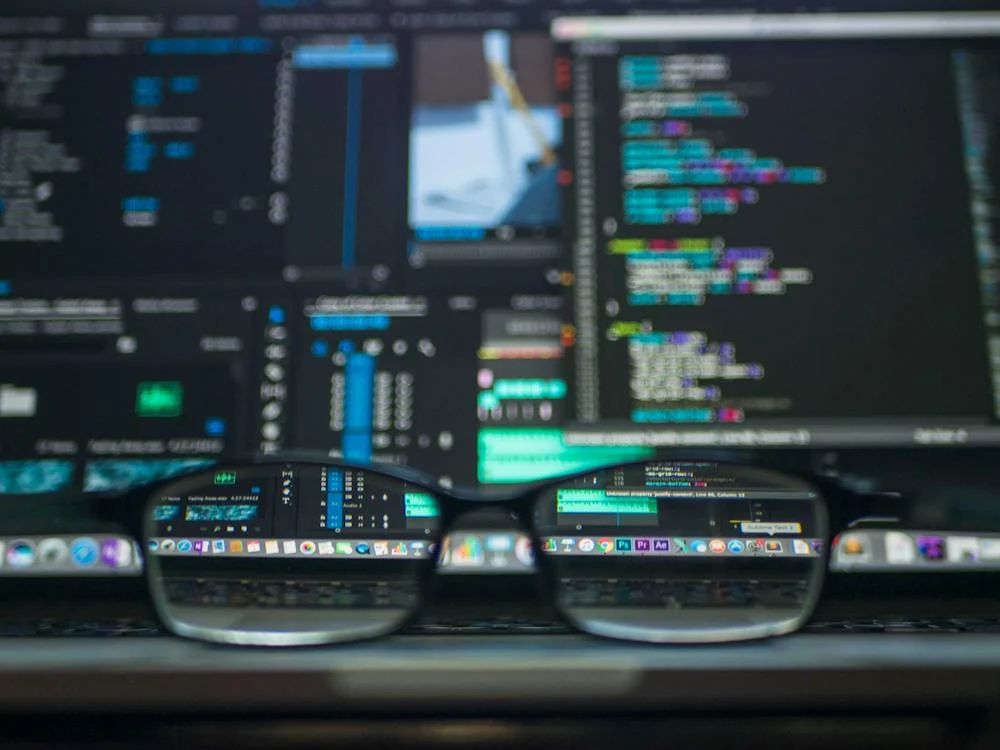
This website uses cookies
We use Cookies to ensure better performance, recognize your repeat visits and preferences, as well as to measure the effectiveness of campaigns and analyze traffic. For these reasons, we may share your site usage data with our analytics partners. Please, view our Cookie Policy to learn more about Cookies. By clicking «Allow all cookies», you consent to the use of ALL Cookies unless you disable them at any time.
Introduction
Overview of Recent Advancements in Robotics
The field of robotics has witnessed remarkable advancements in recent years, transforming from a niche scientific pursuit into a cornerstone of modern technology. These advancements encompass various aspects, including enhanced AI integration, improved sensory and motor capabilities, and more sophisticated human-robot interactions. Breakthroughs such as autonomous vehicles, robotic surgery, and personal assistant robots have not only captured the public imagination but also signaled a significant leap in what robotic technology can achieve. The integration of machine learning and AI has enabled robots to perform complex tasks with greater precision and autonomy, heralding a new era in robotics that extends far beyond traditional manufacturing and industrial applications.
The Importance of Discussing Ethical Implications
As robotics technology continues to evolve and integrate into various aspects of human life, it is imperative to consider the ethical implications of these developments. Questions arise about privacy, security, the potential displacement of jobs, and the ethical use of robots in sensitive areas like healthcare and law enforcement. The ethical discourse surrounds not just the use, but also the design and development, of robotic technologies. It involves a critical examination of how these technologies align with societal values and norms, ensuring that they contribute positively to society without infringing on individual rights or perpetuating inequalities. Discussing these ethical implications is crucial for guiding the responsible development and deployment of robotic technologies, shaping a future where the benefits of robotics are balanced against moral and ethical considerations.
Preview of Future Applications
Looking ahead, the future applications of robotics are diverse and hold immense potential. We are on the cusp of seeing more widespread adoption of robotics in healthcare, where robots can perform surgeries with precision or provide care for the elderly. Environmental applications are also on the rise, with robots being used for tasks like ocean cleaning and wildlife monitoring. In space exploration, robotics will continue to play a pivotal role, enabling deeper exploration of planets and asteroids. Furthermore, the personal robotics industry is set to expand, with robots becoming an integral part of daily life, from performing household chores to offering companionship. This section of the article will delve into these applications, exploring how they could reshape various industries and aspects of daily life, while also considering the ethical and societal implications of such advancements.
Historical Context and Evolution of Robotics
Early Developments in Robotics
The journey of robotics began in antiquity, with early inventions like automata, and mechanical devices designed to imitate human or animal actions. However, the true genesis of modern robotics can be traced back to the 20th century. The term "robot" was first coined in 1920 by Czech playwright Karel Čapek in his play "R.U.R." or "Rossum's Universal Robots." The concept of robots as programmable machines emerged in the 1940s and 1950s, with pioneers like Alan Turing laying the groundwork for artificial intelligence and robotic thought processes. The first digitally operated and programmable robot, the Unimate, was installed in 1961 at a General Motors plant in New Jersey, initiating the era of industrial robotics.
Key Milestones and Technological Breakthroughs
The evolution of robotics has been marked by several key milestones and technological breakthroughs. In the 1970s, the development of microprocessors and computer technology provided a significant boost to robotics, allowing for more complex and precise control systems. The 1980s and 1990s saw the emergence of robotic arms and automation in manufacturing, significantly improving efficiency and precision in tasks like welding and assembly.
The advent of the internet and increased computational power in the late 20th and early 21st centuries led to major advancements in artificial intelligence and machine learning, enabling robots to process large amounts of data and learn from their environments. This period also witnessed the development of autonomous robots capable of navigating and making decisions independently, a leap forward in robotics.
Transition from Industrial to Everyday Use
Initially confined to industrial and manufacturing applications, robotics has gradually transitioned into more varied and personal uses. This shift began in earnest in the 2000s, with the introduction of robots in sectors such as healthcare, logistics, and service industries. Robots like Da Vinci Surgical System revolutionized minimally invasive surgeries, while autonomous vehicles and drones started to change the landscape of transportation and delivery services.
The last decade has seen a significant expansion in the role of robotics in everyday life. From robotic vacuum cleaners to personal assistant devices like Amazon’s Alexa, robots are becoming an integral part of the daily experience for many people. This transition has been facilitated by advancements in sensor technology, AI, and the increasing affordability and accessibility of robotics technology.
The historical context and evolution of robotics demonstrate a field that has rapidly progressed from rudimentary automated machines to sophisticated, intelligent systems capable of a wide range of functions. This evolution from industrial uses to everyday applications marks a significant shift in how humans interact with and benefit from robotic technology.
Current State of Robotics
Overview of Current Technological Capabilities
The current state of robotics is characterized by advanced technological capabilities that have broadened the scope and effectiveness of robots. Modern robots are equipped with sophisticated sensors, enhanced artificial intelligence, and greater physical dexterity, allowing them to perform tasks with high precision and autonomy. The integration of AI has been pivotal, enabling robots to learn from their environment, adapt to new tasks, and make independent decisions based on real-time data. Robotics now encompasses not just physical machines, but also software robots or 'bots' that automate digital tasks. The advancements in robotics technology have made robots more versatile, efficient, and accessible across various sectors.
Robotics in Various Industries
The impact of robotics is evident across multiple industries, reshaping traditional practices and introducing new capabilities:
Manufacturing: Robotics continues to be a staple in manufacturing, with robots performing tasks ranging from assembly to quality control, enhancing productivity and safety.
Healthcare: Robots are transforming healthcare with applications in surgery, rehabilitation, and patient care. Robotic surgical systems enable minimally invasive procedures with higher precision, while assistive robots provide aid to elderly and disabled individuals.
Agriculture: In agriculture, robots are used for tasks like planting, harvesting, and monitoring crops, helping to increase efficiency and reduce labor costs.
Retail and Logistics: Robotics in retail and logistics has grown, with robots used in warehousing, inventory management, and even as customer service assistants.
Environmental Monitoring and Protection: Robots are increasingly deployed for environmental monitoring, wildlife conservation, and disaster response efforts.
Impact on Workforce and Economy
The rise of robotics has significant implications for the workforce and the economy:
Job Displacement and Creation: While robotics has led to the displacement of some jobs, particularly in sectors like manufacturing, it has also created new job opportunities in robot design, maintenance, and programming.
Skill Shift: The demand for skills is shifting, with an increased need for technical expertise in robotics, software development, and data analysis.
Economic Growth: Robotics contributes to economic growth by improving productivity, efficiency, and quality of output in various industries.
Workforce Transformation: The integration of robots in workplaces is transforming the nature of work, leading to more collaborative human-robot work environments.
Addressing Labor Shortages: Robotics offers solutions to labor shortages in sectors like agriculture and healthcare, especially in aging societies.
The current state of robotics is marked by technological sophistication and a widening scope of applications across industries. While this rapid advancement presents challenges, particularly in terms of workforce impact and economic changes, it also offers significant opportunities for growth, innovation, and addressing societal needs. The future of robotics promises even greater integration into daily life and industry, with the potential to profoundly reshape how we work and live.
Ethical Implications of Robotics
Privacy Concerns and Surveillance
The widespread use of robotics, especially those equipped with surveillance capabilities and data collection tools, raises significant privacy concerns. Robotics integrated with cameras, facial recognition, and data analytics can lead to invasive surveillance, potentially infringing on individual privacy rights. There's a growing debate on how to balance the benefits of robotic technology, like improved security, with the need to protect personal privacy. This issue becomes even more complex with the deployment of autonomous drones and robotic surveillance in public spaces, necessitating stringent privacy regulations and ethical guidelines.
Decision-Making and Moral Responsibility
As robots become more autonomous, the question of decision-making and moral responsibility arises. How do we assign responsibility for the actions of a robot, especially in scenarios where they're required to make autonomous decisions? This issue is particularly pertinent in the case of military robots or autonomous vehicles where decisions can have life-altering consequences. The challenge lies in programming ethical decision-making frameworks into robots and determining accountability—whether it’s the developers, users, or the robots themselves—when things go wrong.
Impact on Employment and Skill Displacement
Robotics has significantly transformed the job market, leading to concerns over employment and skill displacement. Automation and robotics have the potential to replace human labor in various industries, leading to job losses, especially in low-skill sectors. However, they also create new job opportunities in high-tech sectors, necessitating a shift in workforce skills. The ethical implication lies in addressing the transition for workers displaced by robotics, providing retraining and education to help them adapt to the changing job landscape.
Legal and Regulatory Challenges
The rapid advancement of robotics presents numerous legal and regulatory challenges. Current laws and regulations may not adequately address the novel issues posed by robotics, such as liability in accidents involving autonomous vehicles, intellectual property rights in AI-generated content, and the use of robots in public spaces. There's an urgent need for updated legal frameworks that can keep pace with technological advancements in robotics. These frameworks should ensure that the development and deployment of robotic technologies are safe, secure, and in alignment with societal values and norms.
The ethical implications of robotics are wide-ranging and complex, encompassing privacy concerns, moral responsibility in decision-making, impact on employment, and the need for robust legal and regulatory frameworks. As robotics continues to advance and become more integrated into society, it's crucial to address these ethical challenges head-on, ensuring that the development and application of robotic technologies are guided by ethical principles and contribute positively to society.
Future Applications of Robotics
Potential in Healthcare and Medicine
Robotics holds immense potential to transform healthcare and medicine. In the future, we can expect more sophisticated robotic surgeons capable of performing complex surgeries with precision beyond human capabilities. These advancements could lead to reduced recovery times and lower risks of complications. Additionally, robotics is set to play a significant role in patient care, with the development of robotic assistants to aid in the care of elderly and disabled individuals. These assistants could help with daily activities, monitor health conditions, and provide companionship, thereby improving the quality of life and healthcare delivery.
Robotics in Environmental Conservation and Management
In the field of environmental conservation and management, robotics offers promising solutions. Future applications include the use of drones for monitoring wildlife populations and tracking environmental changes, like deforestation and glacier movements. Underwater robots could play a crucial role in ocean conservation, conducting research in depths unreachable by humans and monitoring the health of marine ecosystems. Robotics can also contribute to waste management, with automated systems sorting and recycling waste more efficiently than current methods, thereby aiding in the fight against pollution and climate change.
The Role in Space Exploration
Robotics will continue to be a pivotal element in space exploration. Future missions to Mars and beyond could see advanced robotic rovers and drones exploring alien terrains, conducting experiments, and searching for signs of life. Robotic systems might also be used in the construction and maintenance of space stations and habitats, as well as in mining extraterrestrial bodies for resources. These applications could open new frontiers in our understanding of the universe and pave the way for human exploration of distant worlds.
Everyday Life and Personal Assistance
In everyday life, the future of robotics is marked by the integration of robots as personal assistants and helpers. We can anticipate the evolution of smart homes with robotic systems handling domestic chores, from cleaning to cooking. Personal assistant robots could become more interactive and intuitive, capable of providing personalized support in managing daily schedules, offering reminders for appointments, or even assisting with educational needs. Robotics in personal transportation, like self-driving cars, could transform how we commute, increasing safety and efficiency.
The future applications of robotics are vast and varied, offering exciting prospects in healthcare, environmental conservation, space exploration, and everyday life. These advancements promise not only to enhance efficiency and capabilities in various fields but also to improve the quality of life, opening up new possibilities for innovation and exploration. As we move forward, the continued development and integration of robotics in these areas will undoubtedly shape a future where robotics is an integral part of our world.
Balancing Innovation with Ethical Responsibility
Developing Ethical Guidelines for Robotics
As the field of robotics continues to advance, the development of ethical guidelines becomes crucial to ensure that these technologies are used responsibly. These guidelines should encompass principles like respect for human rights, privacy, safety, and transparency. Academic institutions, industry leaders, and ethicists need to collaborate in creating a framework that governs the design, development, and deployment of robots. This framework should address concerns like the decision-making autonomy of robots, data handling, and user consent. Ethical guidelines must also be adaptable to keep pace with the rapid evolution of robotics technology, ensuring ongoing relevance and efficacy.
The Role of Government and Regulatory Bodies
Government and regulatory bodies play a pivotal role in balancing innovation in robotics with ethical responsibility. Their responsibilities include legislating and enforcing laws that govern the use of robotics, ensuring public safety, and protecting individual rights. Governments should aim to create policies that encourage innovation while also putting checks in place to prevent misuse or unintended consequences of robotic technologies. This might involve setting standards for robot safety, data security, and ensuring accountability in the event of malfunctions or accidents. International cooperation can be particularly important, given the global nature of technological development and the need for standardized regulations across borders.
Community and Stakeholder Engagement
Engaging communities and stakeholders is essential in aligning robotic innovations with societal needs and ethical norms. Public dialogue and consultations can help in understanding societal concerns and expectations regarding robotics. This engagement should include not just the end-users but also those potentially impacted by the deployment of robotics, such as workers in sectors facing automation. Encouraging a participatory approach in the development of robotics can help identify ethical risks early and ensure that the technology reflects diverse perspectives and needs. This process also promotes public trust and acceptance of robotics technology.
Balancing innovation in robotics with ethical responsibility requires a multifaceted approach involving the development of ethical guidelines, active government participation in regulation and legislation, and continuous engagement with communities and stakeholders. These efforts ensure that the advancements in robotics not only drive technological progress but also align with ethical standards and societal values, fostering a future where innovation and responsibility go hand in hand.
Preparing for a Robotic Future
Educational and Workforce Training
As we step into a future increasingly shaped by robotics, education, and workforce training are key to ensuring a smooth transition. Educational systems need to adapt to prepare individuals for a world where robotics and automation are commonplace. This means not only focusing on STEM fields but also integrating robotics into various levels of education, from primary schools to universities and vocational training programs. Skills in programming, machine learning, mechanical engineering, and data analytics will become increasingly valuable.
For the existing workforce, retraining and upskilling programs are crucial. These programs should be designed to transition workers from roles susceptible to automation to areas where human skills are irreplaceable. Partnerships between educational institutions, industries, and governments can facilitate the development of such programs, ensuring they are relevant and accessible.
Public Awareness and Perception
Public awareness and perception play a significant role in the adoption and integration of robotics into society. Efforts should be made to educate the public on the benefits and challenges of robotics. This includes dispelling myths and addressing fears about automation and job displacement. Public outreach can be achieved through media, public demonstrations, and open dialogues, helping to build a more informed and accepting society.
Furthermore, it's important to promote a positive narrative around robotics, highlighting how they can improve quality of life, enhance safety, and solve complex problems. By doing so, the public can be more receptive to the robotic future and view these advancements as opportunities rather than threats.
 Efficiency Revolution: Robotic Process Automation (RPA) and Its Impact on Business Process Optimization
Read
Efficiency Revolution: Robotic Process Automation (RPA) and Its Impact on Business Process Optimization
Read
Fostering Collaborative Innovation
Fostering collaborative innovation is essential in the development and application of robotics. This involves creating ecosystems where businesses, researchers, governments, and communities work together. Such collaboration can spur innovation that is not only technologically advanced but also socially and ethically responsible.
Incentives for research and development, funding for collaborative projects, and platforms for sharing knowledge and resources can all contribute to a thriving environment for innovation in robotics. Additionally, encouraging international collaboration can lead to a more diverse and comprehensive approach to robotic technology development, considering various cultural and societal contexts.
Preparing for a robotic future requires concerted efforts in education and workforce training, public awareness and perception management, and fostering collaborative innovation. By addressing these areas, society can not only adapt to but also thrive in a future where robotics plays a central role. This preparation ensures that the benefits of robotic advancements are maximized while mitigating potential risks and challenges.
Conclusion
The Future Landscape of Robotics
As we look toward the future, the landscape of robotics is poised to undergo transformative changes that will have far-reaching implications. The integration of robotics into diverse sectors — from healthcare and environmental management to space exploration and daily life — promises not only technological marvels but also fundamental shifts in how we interact with machines. Robotics is set to become more intuitive, interactive, and integrated into our everyday lives, potentially reshaping societal norms and practices. The advancements in AI and machine learning will further propel the capabilities of robots, making them more autonomous and efficient. This future landscape of robotics, brimming with potential, stands as a testament to human ingenuity and the relentless pursuit of innovation.
Emphasizing Ethical Considerations
As we embrace this robotic future, it is crucial to keep ethical considerations at the forefront. The journey of robotics should not be guided solely by technological possibilities but also by a commitment to societal values and norms. Privacy, security, employment impacts, and moral responsibility are just a few of the ethical dimensions that must be addressed. Developing ethical guidelines, ensuring responsible use, and considering the societal implications of robotics are essential steps in realizing a future where robotics technology is both advanced and aligned with human values.
Call to Action for Responsible Advancements
This pivotal moment in the evolution of robotics calls for a collective effort to ensure responsible advancements. Governments, industries, academia, and the public must come together to shape a future where robotics not only advances human capabilities but also adheres to ethical and moral standards. It is a call to action for policymakers to craft regulations that foster innovation while protecting public interest; for educators and trainers to prepare individuals for a robotics-integrated workforce; for the public to engage in informed dialogues; and for innovators to pursue advancements with a conscientious approach.
In conclusion, the future of robotics offers a landscape of immense possibilities, challenges, and opportunities. As we venture into this uncharted territory, it is our collective responsibility to guide the development of robotics in a direction that not only pushes the boundaries of technology but also upholds the principles of ethical responsibility and societal well-being. The future we envision with robotics is not just about the machines we create; it's about the kind of world we want to build with them.




